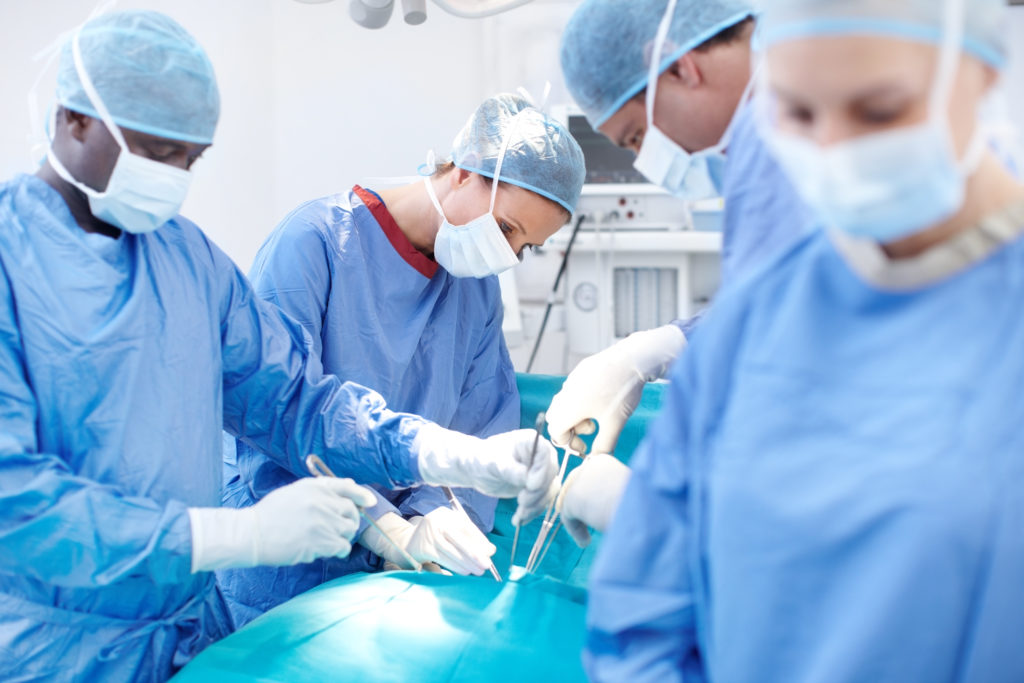
Hernia Repair Surgery
A hernia is usually treated with surgery. There are three main types of hernia surgery; open hernia repair, laparoscopic hernia repair and robotic hernia repair.
What is open hernia repair surgery?
Open hernia repair is where an incision, or cut, is made in the groin. The hernia “sac” containing the bulging intestine is identified. The surgeon then pushes the hernia back into the abdomen and strengthens the abdominal wall with stitches or synthetic mesh. Most patients will be able to go home a few hours after surgery and feel fine within a few days. Strenuous activity and exercise are restricted for four to six weeks after the surgery.
What is laparoscopic (minimally invasive) hernia repair surgery?
Laparoscopic (minimally invasive) hernia repair uses a laparoscope, a thin, telescope-like instrument that is inserted through a small incision at the umbilicus (belly button). This procedure is usually performed under general anaesthesia, so before the surgery, you will have an evaluation of your general state of health, including a history, physical exam (and possibly lab work) and an electrocardiogram (EKG).
You will not feel pain during this surgery. The laparoscope is connected to a tiny video camera, smaller than a dime, that projects an "inside view" of your body onto television screens in the operating room.
The abdomen is inflated with a harmless gas (carbon dioxide), which creates space to allow your doctor to view your internal structures. The peritoneum (the inner lining of the abdomen) is cut to expose the weakness in the abdominal wall. Mesh is placed on the inside to cover the defects in the abdominal wall and strengthen the tissue.
After the procedure is completed, the small abdominal incisions are closed with a stitch or two or with surgical tape. Within a few months, the incisions are barely visible.
Benefits of laparoscopic hernia surgery include three tiny scars rather than one larger incision, less pain after surgery, a quicker return to work and a shorter recovery time (days instead of weeks).
What is robotic hernia repair surgery?
Robotic hernia repair, like laparoscopic surgery, uses a laparoscope and is performed in the same manner (small incisions, a tiny camera, inflation of the abdomen, projecting the inside of the abdomen onto television screens).
Robotic surgery differs from laparoscopic surgery in that the surgeon is seated at a console in the operating room, and handles the surgical instruments from the console. While robotic surgery can be used for some smaller hernias or weak areas, it can now also be used to reconstruct the abdominal wall.
One of the biggest differences between laparoscopic surgery and robotic surgery is that the use of the robot provides excellent three-dimensional images of the inside of the abdomen (vs. the two-dimensional images of laparoscopic surgery). Robotic surgery also allows the surgeon to easily use stitches to sew tissue and meshes inside the abdomen.
Other benefits of robotic hernia surgery are that the patient has tiny scars rather than one large incision scar, and there may be less pain after this surgery compared to open surgery.
When you come in for a consultation with one of Chawla Nursing Home’s doctors, you will be given information about all your options. Schedule your appointment today.
Schedule An Appointment
Get your Appointment Confirm with us Easily

